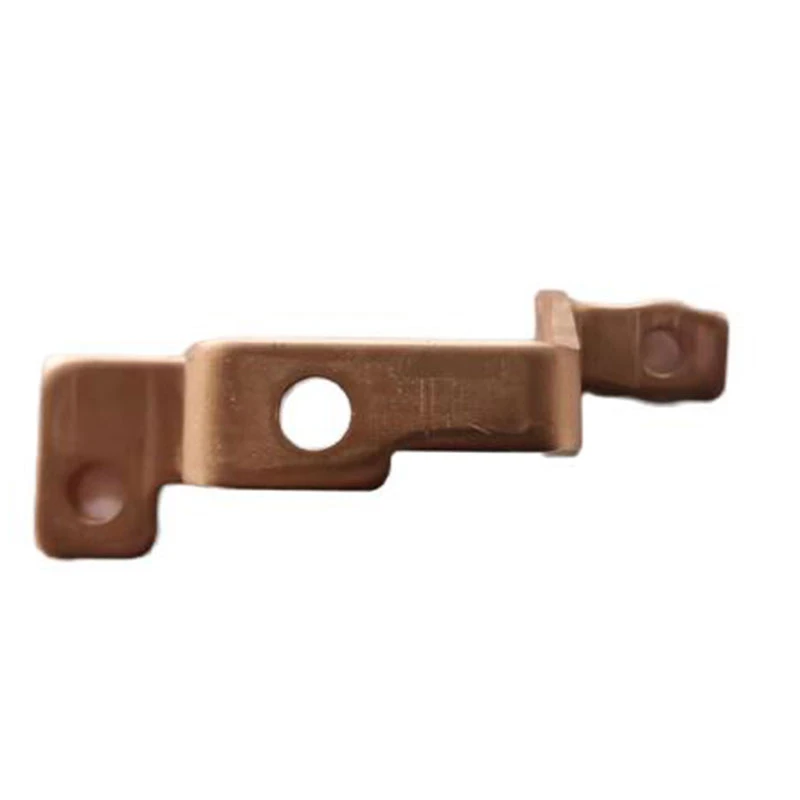what is pattern in sand casting
Understanding Patterns in Sand Casting
Sand casting is one of the oldest and most versatile manufacturing processes used to create metal parts. It involves pouring molten metal into a mold made of sand, which takes the shape of the desired object. Central to this process is the use of patterns, which are models of the final product that help to form the mold cavity.
What is a Pattern?
In the context of sand casting, a pattern serves as a replica of the final product that is to be produced. It can be made from a variety of materials, including wood, metal, or plastic, and is designed to create a mold that captures the details of the desired part. Patterns can come in different forms, including solid patterns, split patterns, or multiple part patterns, depending on the needs of the casting process. Each type of pattern serves a specific purpose in the sand casting process and can significantly affect the quality and precision of the final product.
Types of Patterns
1. Solid Patterns These are the simplest type of patterns and are used for producing simple shapes with no undercuts. A solid pattern is a single piece that directly represents the part to be cast.
2. Split Patterns Split patterns are divided into two or more halves that can be easily removed from the mold. This type is used for more complex shapes that cannot be easily removed from the mold in one piece without damaging it.
3. Match Plates Match plates are a variation of split patterns that consist of two halves mounted on a single plate. This design enables the creation of multiple molds from a single design and is efficient for high-volume production.
4. Core Patterns In instances where internal features or cavities are required, core patterns are used. These patterns form cores that are placed within the mold cavity to create hollow spaces in the final cast part.
Importance of Patterns in Sand Casting
what is pattern in sand casting

The pattern is crucial because it directly influences the molding process and the resulting quality of the cast part. A well-designed pattern allows for
- Accuracy The pattern determines the dimensions and shape of the final product. Precise patterns lead to accurate molds, which in turn produce accurate castings. - Surface Finish The finish of the pattern contributes to the surface finish of the casting. A smooth pattern will produce a smooth casting, while a rough pattern will lead to a rougher final product. - Cost Efficiency Patterns can be reused many times, making them a cost-effective solution for large production runs. The durability of the pattern material affects the overall cost-effectiveness of the casting process. - Production Speed The design and efficiency of the pattern can impact cycle times in production, allowing for faster throughput in high-volume operations.
Considerations in Pattern Design
Designing an effective pattern involves several considerations
- Shrinkage Metals tend to shrink as they cool. Patterns must be designed slightly larger than the desired dimensions to account for this shrinkage.
- Draft Angles To facilitate mold removal, patterns generally incorporate draft angles. Without adequate draft, the mold could become stuck, leading to production delays and potential damage to both the mold and the pattern.
- Material Selection The choice of material for the pattern affects its durability, machining time, and surface finish. Common materials include wood for short production runs, while metals such as aluminum are preferred for high-volume applications due to their longevity and precision.
- Cost vs. Quality Balancing the costs involved in pattern making with the quality of the resultant mold is critical. This often involves trade-offs that must be carefully analyzed before production begins.
Conclusion
In summary, the role of patterns in sand casting is integral to the success of the process. Patterns not only shape the final product but also dictate its quality, efficiency, and cost. Understanding the various types of patterns and the principles behind their design can significantly enhance the casting process, allowing manufacturers to produce high-quality components consistently. As technology evolves, the methods and materials used in pattern making continue to advance, improving the sand casting industry and driving innovation in metal part production.
-
Precision Sheet Metal Stamping Manufacturer | Fast & ReliableNewsAug.01,2025
-
OEM Sand Cast Pump Valve Fittings - Baoding Hairun Machinery And Equipment Trading Co., Ltd.NewsAug.01,2025
-
Custom OEM Impellers | High Efficiency & PrecisionNewsAug.01,2025
-
OEM Sand Cast Pump Valve Fittings - Baoding Hairun Machinery | Customization, Quality AssuranceNewsAug.01,2025
-
OEM Sand Cast Pump Valve Fittings - Baoding Hairun Machinery And Equipment Trading Co., Ltd.NewsAug.01,2025
-
OEM Sand Cast Pump Valve Fittings - Baoding Hairun Machinery And Equipment Trading Co., Ltd.NewsJul.31,2025















